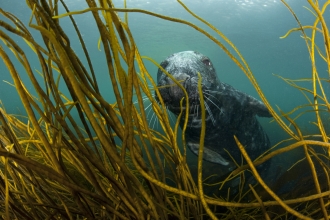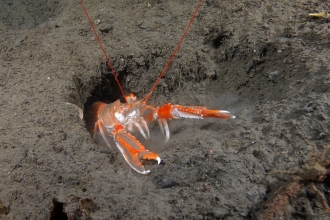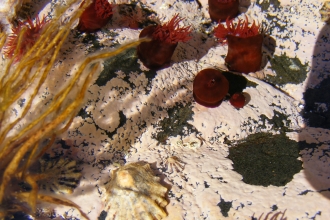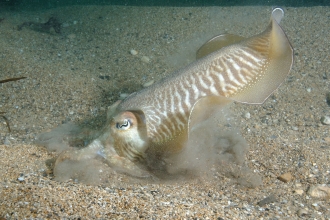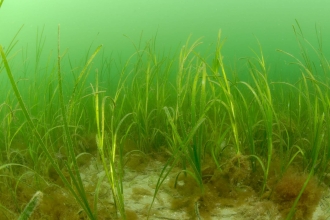Cold-water coral ©DeepLinks Project - Plymouth University, Oxford University, JNCC, BGS
Deep-water corals
What is it?
Deep-water corals are also referred to as cold-water corals, as they, unlike tropical corals, grow in water with temperatures ranging from 4°C to 12°C. The Lophelia species are the most common in UK waters. They feed on zooplankton, crustaceans and krill carried to them by the currents.
Unlike shallow water corals, they do not depend on a symbiotic algae (zooxanthellae) for growth and survival, resulting in slower growth. It is estimated that the Lophelia grows an average of 10 mm per year compared to 10-20 mm a year for warm water corals; from their size, it is estimated that some mounds can be up to 8000 years old.
The coral mounds provide habitats for species such as starfish, sponges, anemones, redfish and squat lobster, as well as several commercially important species including cod and crab. Various species use the habitat for feeding, spawning and nursery sites, as it can provide protection from strong currents and predators.
Why is it like this?
The coral form colonies that grow in large patches and in appearance they are much like reefs; the largest recorded in UK waters is 30m in height. The deep water aggregations are often described as mounds rather than reefs as it better describes the calcium carbonate skeleton remaining as the new coral grows.
Deep-water corals are mainly stony corals, but also include black, horny and soft corals.
Distribution in the UK
Deep-water coral can be found worldwide in ocean depth ranging from 50m to 3000m, but most frequently found at a depth between 200m and 400m.
In UK waters, they occur on the North and West coast of Scotland and the West coast of Ireland. The largest recorded formation in the UK is the Darwin Mounds located 186 km North/West of the coast of Scotland. Discovered in 1998 it is two series of coral mounds at a depth of approximately 1000m (3,300ft), together they cover an area of 100km2 (39 sqmiles).
What to look for
As deep-water corals tend to be found at depths between 200-400m, few people get to see the incredible sea life they support first-hand. But deep-water corals form an oasis of shelter and food for many weird and wonderful invertebrates, from anemones to sea urchins. They’re good news for fish too; pregnant redfish are thought to use them as a refuge and many commercially important fish species are known to use them as breeding grounds.
Conservation
The species-rich habitat that the coral provide means that they are extremely attractive fishing grounds. The main threat to deep water corals is therefore the damage caused by towed fishing gear/trawling that can act to break down and destroy the coral. What has taken thousands of years to generate can be destroyed in a matter of seconds, resulting in loss of important habitat for a range of marine species.
Another threat to deep-water coral is oil and gas exploration and production, which can also act to break and destroy the reefs.
Climate change is a further threat as changes in ocean temperature can potentially alter the current system which could remove or alter the food supply to existing corals.
The Wildlife Trusts are calling for nature's recovery at sea. You can help by pledging your support and becoming a Friend of MCZs.

